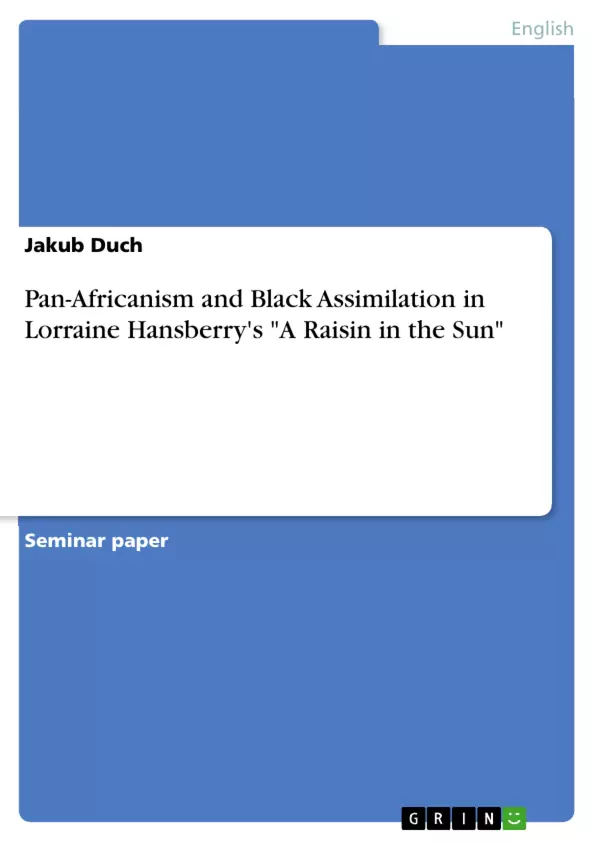This seminar paper explains the historical and biographical background of Lorraine Hansberry's writing "A Raisin in the Sun". The African American intelligentsia has always been torn between assimilating into a society built by and for white people, and the longing for a deeper connection with Africa and its cultures. Hansberry, the most talented African American playwright of the post-war era, tackles this issue by using two male figures as antagonists in her play which is one of the all-time classics of black American literature. Apart from its witty dialogues and the realistic and authentic characters, the many issues the play comments on make it stand out. For an analyst of literature, there are many possibilities of examining it further. One possibility could be the role segregation (and the struggle to overcome it) plays in "A Raisin in the Sun", since Lorraine Hansberry’s father fought in court for his right to move into a predominately white neighborhood.
Another way of studying the play could perhaps lay the focus onto Hansberry’s feminism and the representation of gender roles in it, since it features various strong female characters. One could also analyze the play as a comment on capitalist ideology, the American dream and the poor’s desperate quest for material well-being. However, I decided to analyze the actions of two characters that symbolically stand for two different ways African Americans can choose: identification with blackness and Africa and assimilationism are represented by the characters of Asagai and George Murchison, respectively. The stark contrast between the two, the scenario of Beneatha choosing between them, and the way Hansberry employed the literary technique of personification were the reason this aspect of the play appeared the most interesting.
Table of Contents
- Introduction
- Joseph Asagai
- George Murchison
- Pan-Africanism and Lorraine Hansberry
- Marcus Garvey and W.E.B. DuBois as Pan-Africanist thinkers
- Hansberry's personal relationship with Africa and Pan-Africanism
- African American assimilationism
- The example of Booker T. Washington
- Assimilationism in the life of Lorraine Hansberry
- Resume/Conclusion
Objectives and Key Themes
This paper aims to analyze the contrasting ideologies of Pan-Africanism and assimilationism as represented by the characters of Joseph Asagai and George Murchison in Lorraine Hansberry's play "A Raisin in the Sun." It delves into the historical context of these movements, exploring their prominent figures and ideologies, and examines how they are woven into the play's narrative and characters.
- The significance of African identity and its relation to Pan-Africanism.
- The role of assimilationism in African American society and its impact on individuals.
- The interplay between personal choices and societal pressures in the context of racial identity.
- The complexities of African American identity within the context of the Civil Rights movement.
- The power of literary techniques, particularly personification, in conveying ideological tensions.
Chapter Summaries
- Introduction: This chapter introduces the play "A Raisin in the Sun" and its significance in black American literature. It discusses various thematic possibilities for analyzing the play, highlighting the focus on Pan-Africanism and assimilationism represented by Asagai and Murchison.
- Joseph Asagai: This chapter provides a detailed characterization of Joseph Asagai, emphasizing his strong African identity and his role as a symbol of Pan-Africanist ideals. It analyzes his name, personality, and actions within the play, connecting them to the historical context of Nigerian independence.
Keywords
Key concepts explored in this paper include Pan-Africanism, assimilationism, African American identity, racial consciousness, societal pressures, and literary analysis. It also investigates the impact of historical figures like Marcus Garvey, W.E.B. DuBois, and Booker T. Washington on the development of these ideologies.
- Quote paper
- Jakub Duch (Author), 2015, Pan-Africanism and Black Assimilation in Lorraine Hansberry's "A Raisin in the Sun", Munich, GRIN Verlag, https://www.grin.com/document/512574



